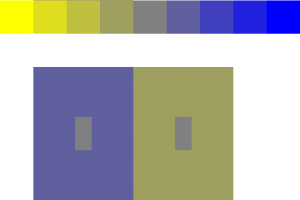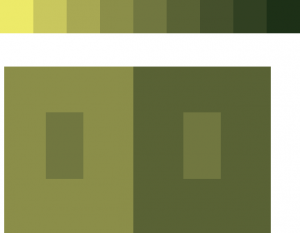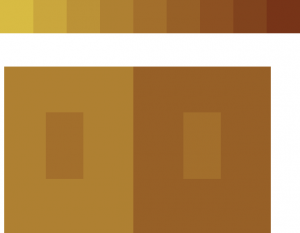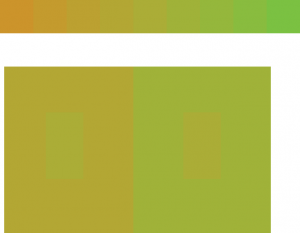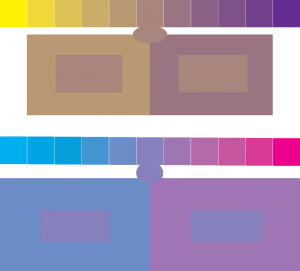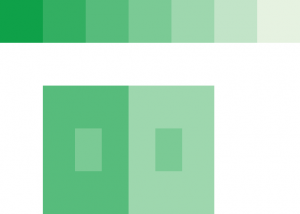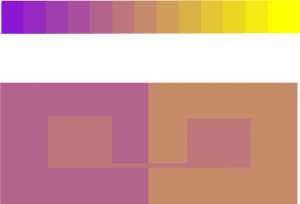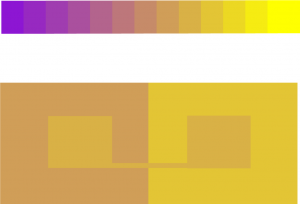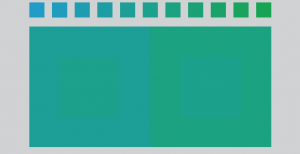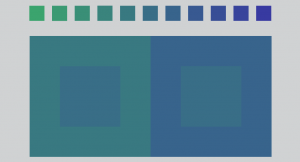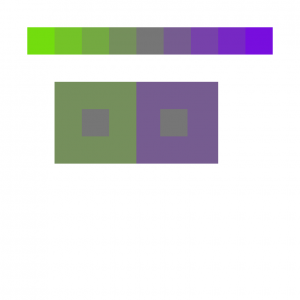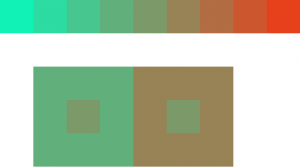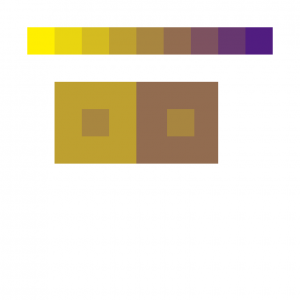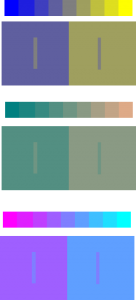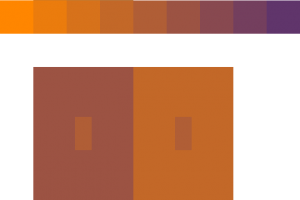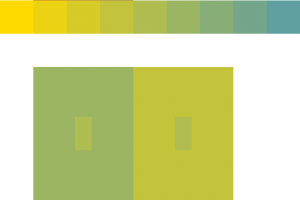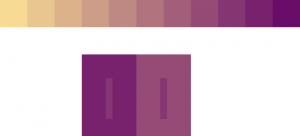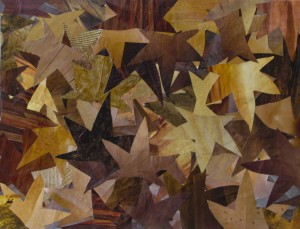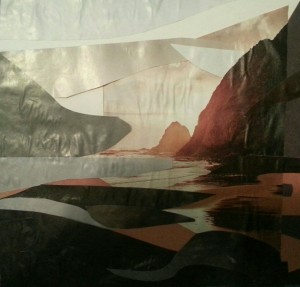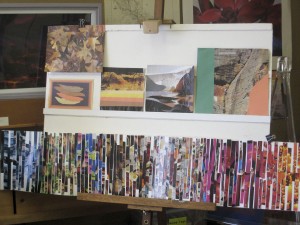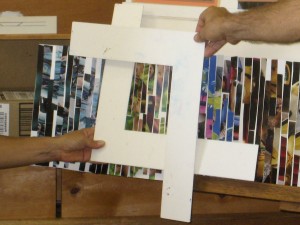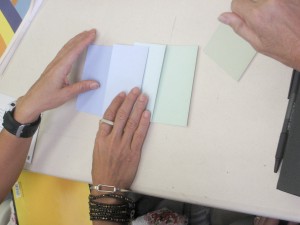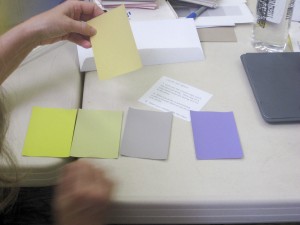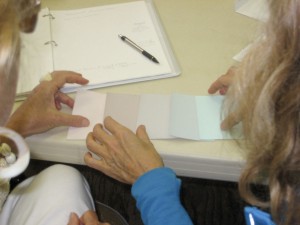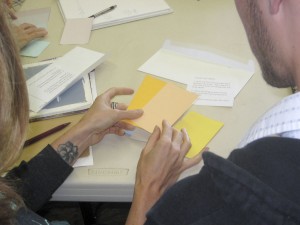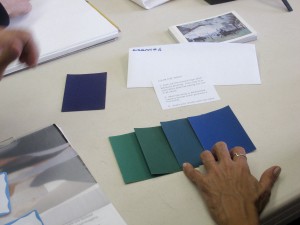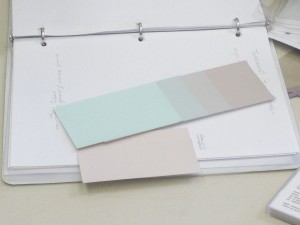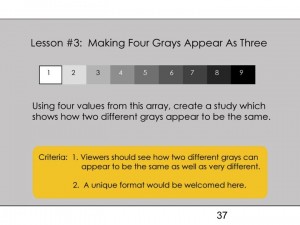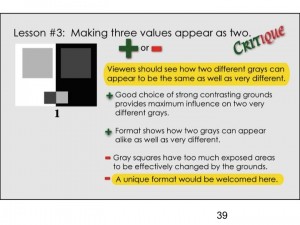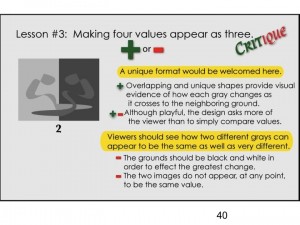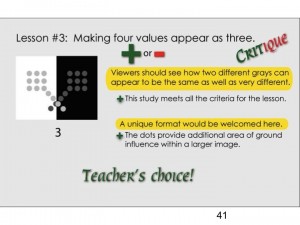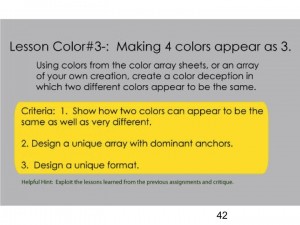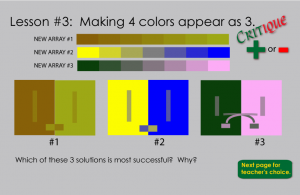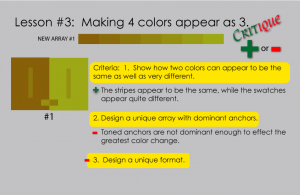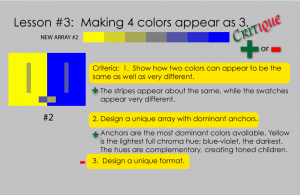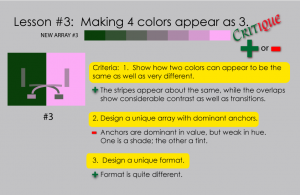The third session of the Color Relationships class for Fall 2014 was held on Friday, October 24. We critiqued the second color deception assignment, “make three colors appear as two, or reversed grounds” and free color studies, as well as revisions of the first color deception exercise, “make one color appear as two”. The third color deception exercise was assigned: make four colors appear as three, showing how two colors can appear to be the same, yet are very different, in a unique format. An exercise with Color-Aid paper gave practice in recognizing arrays and the phenomenon of halation.
Homework assignment
Here are this week’s homework assignments:
- Making 4 colors appear as 3 (see PDF below). Create several solutions to this assignment. If you have access to the Interaction of Color book or app, this exercise comes from chapter VII, “2 different colors look alike – subtraction of color”.
- Create a more effective version of the second or first assignment, if you learned something today that you can use to improve it. Send them to me and I’ll post them for peer comment, in place of critiquing previous assignments in next week’s class.
- A free color study
- Add to your journal of color observations or revelations in daily life, to share in the next class – things in nature or in the man-made world that you notice, or see differently now than before the class
[gview file=”https://dicknelsoncolor.com/wp-content/uploads/2013/09/Lesson3Combined.pdf”]
Class recap – some key ideas
Critique – redo exercise 1, making 1 color look like 2
We critiqued reworked versions of the first exercise. They have been added to last week’s post.
Critique – Make three colors appear as two, or reversed grounds
Criteria
- One color, placed on two different grounds, looks like the opposite ground color
- Viewer is convinced
- Simple format allows easy comparison
Constraints
- All colors should be from a single array
Hints for success
- Grounds must be somewhat similar
- Figures must have a lot in common with each ground
Common problems
- Illusion fails to convince: looks like 3 colors, not 2
- Figure looks more like one ground than the other
- More of a value change than hue change (one or both of the grounds is weak in chroma – a tint or shade)
- Format hinders or distracts from comparison
(Reference Albers chapter VI, 1 color appears as 2 – looking like the reversed grounds)
Many of the solutions in Interaction of Color used a color and a tint, which is more of a value change than hue change. Many of today’s student submissions effect a more dramatic hue change!
Revised studies
These studies were reworked and submitted the following week.
Critique – free color studies
The free color studies are digital or physical collages in which the focus is to be on color, not shape or pattern, and there is no obvious subject matter, foreground, or background. Dick emphasized allowing the eye to wander from shape to shape via intersecting areas of similar color or value. He encouraged cropping with “L”s (right-angle sections of matting or framing material) to focus on small compositions within each piece.
Recognizing relatedness – halation and arrays
Dick devised an exercise to promote recognition of color relatedness. Pairs of students were given an envelope containing 5 swatches of Color-Aid paper, with these instructions:
Color Chip Array
- Sort out the colored chips which belong to an array. There may be a color which does not belong, but not in all cases.
- When the array is determined, create a format which produces a HALATION.
- Share your results with the class.
After about 5 minutes, he demonstrated how to recognize halation in a set of related colors: Arrange the swatches in array order so they overlap by about 1/2″ vertically, and slowly slide the lowest one down. As it moves, if the colors are truly related, you’ll see a sort of glow along the upper and lower edges of the middle swatch, of the opposite parent colors. Even though every swatch is a single flat color, array children will appear to have a gradation or fluted appearance.
New content
The new color deception assignment – make four colors appear as three, showing how two colors can appear to be the same, yet are very different, in a unique format – was introduced with the slides below.


